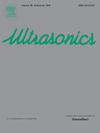Ultrasound Localization Microscopy (ULM) facilitates structural and hemodynamic imaging of microvessels with a resolution of tens of micrometers. In ULM, the extraction of effective microbubble signals is crucial for image quality. Singular Value Decomposition (SVD) is currently the most prevalent method for microbubble signal extraction in ULM. Most existing ULM studies employ a fixed SVD filter threshold using empirical values which will lead to imaging quality degradation due to the insufficient separation of blood signals. In this study, we propose an adaptive and non-threshold SVD filter based on canopy-density clustering, termed DCC-SVD. This filter automatically classifies the components of the SVD based on the density of their spatiotemporal features, eliminating the need for parameter selection. In in vitro tube phantom, DCC-SVD demonstrated its ability to adaptive separation of blood and bubble signal at varying microbubble concentrations and flow rates. We compared the proposed DCC-SVD method with the Block-match 3D (BM3D) filter and a classical adaptive method called spatial similarity matrix (SSM), using concentration-variable in vivo rat brain data, as well as open-source rat kidney and mouse tumor datasets. The proposed DCC-SVD improved the global spatial resolution by approximately 4 μm from 30.39 μm to 26.02 μm. It also captured vessel structure absent in images obtained by other methods and yielded a smoother vessel intensity profile, making it a promising spatiotemporal filter for ULM imaging.


